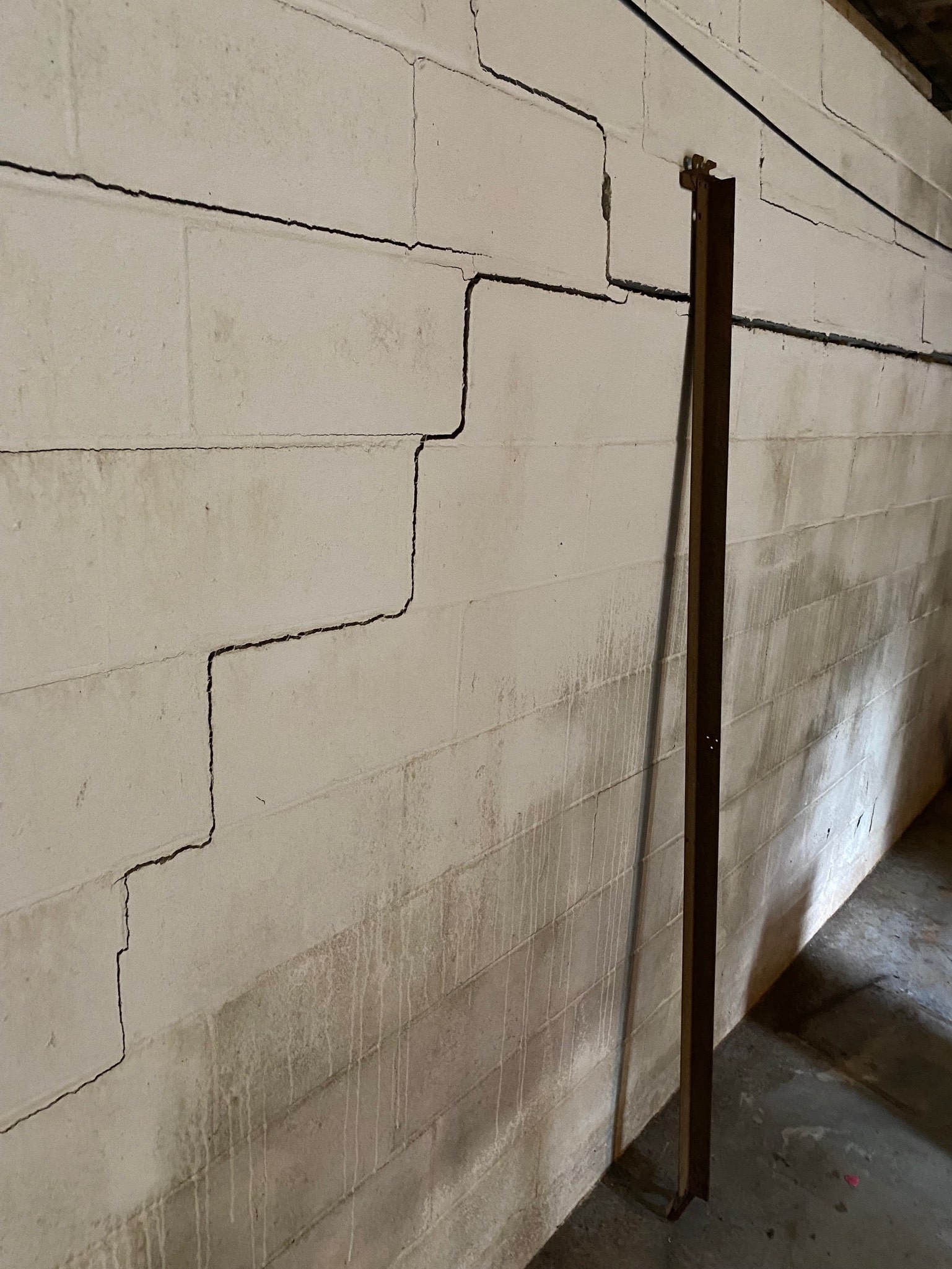
Ever wondered why those unsightly cracks appear on your house’s foundation? It’s not just age; factors like soil movement, poor drainage, and even unsuspecting tree roots can be the culprits. But what if you could prevent them? Imagine not having to worry about expensive repairs or structural damage. Stick around, and we’ll discuss how to maintain your home’s integrity and keep that foundation crack-free.
Key Takeaways
- Foundation cracks are often caused by soil movement, poor drainage, tree roots, construction errors, and natural disasters.
- Soil issues like soil settlement, expansive clay, temperature fluctuations, and variable moisture levels can impact foundations.
- Construction practices such as use of subpar materials, ignorance of soil composition, non-adherence to installation standards, and poor workmanship can affect foundation integrity.
- Preventative measures include proper drainage systems, gutter maintenance, strategic tree planting, moisture barriers, and regular monitoring of soil moisture.
- Repair options for foundation cracks include epoxy injections, underpinning, piering systems, grading, and waterproofing solutions.
Understanding Foundation Cracks
When it comes to your home, foundation cracks can be a significant concern. They’re not just an eyesore; they could indicate a more serious issue with your foundation stability. Understanding the different crack types can help you tackle the problem effectively.
Horizontal, vertical, and diagonal are the three main crack types you’ll come across. Vertical cracks are usually the least alarming, often resulting from settlement in the foundation. Diagonal cracks indicate differential settling, where one part of the foundation has shifted more than another. Horizontal cracks are the most serious, often due to pressure from the soil pushing against the foundation walls.
Identifying crack types isn’t enough; you must also understand their causes. Weather changes, poor drainage, and improper construction all play a part. Moisture can seep into your foundation, causing it to expand and contract with temperature fluctuations, leading to cracks. Inadequate drainage can cause water to pool around your foundation, increasing pressure and exacerbating cracks.
Ultimately, if your foundation wasn’t constructed properly to begin with, it’s more likely to develop issues down the line.
Preventing foundation cracks is largely about proper maintenance. Regularly inspect your foundation, maintain good drainage, and address any issues promptly. It’s your home; be proactive in protecting its stability.
Soil Issues and Your Foundation
While it may seem unrelated, the soil around your home plays a vital role in your foundation’s health. You mightn’t realize it, but soil settlement is one of the main culprits behind foundation problems. As the ground beneath your home shifts and settles, it can cause your foundation to move as well, leading to possible cracks.
Different types of soil have various effects on your foundation. If you’ve got expansive clay, you’re in for a tough time. This type of soil swells when it’s wet and shrinks when it’s dry, causing a constant push and pull on your foundation. This movement can lead to significant strain and, you guessed it, cracks.
So, what can you do about it? It’s essential to guarantee proper drainage around your home to prevent water from soaking into the soil and causing it to expand.
Additionally, consider professional soil stabilization techniques to reduce the risk of soil settlement.
The Role of Weather Conditions
Ever wondered how the weather impacts your foundation? Well, you’re not alone. It’s an essential factor, especially when it comes to temperature fluctuations and moisture levels.
Temperature fluctuations can negatively affect your foundation. During colder months, the ground freezes and expands, exerting pressure on your foundation, which can lead to cracks.
On the other hand, high temperatures can cause the soil to shrink, creating gaps between your foundation and the ground. This back and forth can weaken your foundation over time, causing visible damage and structural issues.
Moisture levels also play a significant role. Excessive rainfall can saturate the soil around your foundation, increasing the pressure and possibly leading to cracks.
On the flip side, prolonged dry spells can cause the soil to contract, destabilizing your foundation.
Poor Construction Practices
Negligence in construction practices is another culprit behind foundation cracks. When you’re building a home, the quality of your building materials and how you use them can dramatically affect the structural integrity of the foundation. Skimping on quality or not following proper installation methods can lead to weak points that crack under pressure.
Consider this table that illustrates the impact of poor construction practices:
| Poor Practice | Potential Result |
|---|---|
| Using subpar materials | Reduced foundation strength |
| Ignoring soil composition | Unstable foundation base |
| Cutting corners in installation | Imperfections leading to cracks |
| Poor workmanship | Uneven weight distribution |
| Ignoring local building codes | Legal and safety issues |
It’s essential you invest in high-quality building materials and follow prescribed construction methods. Don’t underestimate the importance of expert craftsmanship and adherence to local building regulations. All these factors play a significant role in maintaining the structural integrity of your foundation. Avoid poor construction practices to prevent foundation cracks and enjoy a safe, stable home. Remember, the cost of prevention is always cheaper than repair.
Water Damage and Foundations
Beyond the issues of poor construction, water damage poses a significant threat to your foundation. It’s a menace that’s often overlooked, yet it can lead to substantial problems down the line.
Water damage primarily results from poor water drainage and lack of moisture control. When water accumulates around your home, it can seep into the foundation, causing it to deteriorate over time. The constant exposure to water weakens the foundation’s structure and eventually leads to cracks.
Just imagine:
- A pool of water steadily forming around your home after a heavy downpour, having nowhere to go.
- The water slowly seeping into your foundation, unnoticed and unchecked.
- The once sturdy structure of your foundation gradually softening and weakening.
- Visible cracks starting to form, signs of the damage that’s already been done.
Water damage isn’t just about the immediate impact. It’s a persistent threat that continues to deteriorate your foundation, and by the time you notice, the damage might already be extensive.
Make sure to constantly check your home for signs of water damage. It’s better to catch it early before it becomes a larger issue.
Preventative Measures for Cracks
Taking steps to prevent foundation cracks can save you a lot of hassle and money in the long run. Start by implementing a routine crack inspection. This means, regularly examine your foundation for cracks or signs of stress. Small cracks may seem inconsequential, but they’re often an early warning sign of bigger issues down the road.
Next, establish a maintenance routine. This includes ensuring good drainage around your home to keep water away from your foundation. Routine gutter cleaning, maintaining downspouts, and grading your yard to slope away from your house are all effective methods.
Don’t forget about your home’s interior. Keep an eye on your walls and floors for signs of moisture or cracking. Also, monitor the humidity level in your basement. If it’s consistently high, consider using a dehumidifier.
Lastly, regular home inspections are essential. An expert can spot potential issues you might overlook. However, hold off on hiring professionals for foundation repair until necessary – that’s a topic for another time.
Hiring Professionals for Foundation Repair
At some point, despite your best preventative efforts, you might find yourself facing significant foundation cracks that require professional intervention. You can’t just patch these cracks up and hope for the best. You’ll need a proper foundation assessment to determine the extent of the damage and the appropriate repair techniques.
Hiring professionals for foundation repair is essential. They’ve got the skills, the tools, and the knowledge to guarantee a job well done. They’ll perform a thorough assessment, identify the causes, and determine the best course of action. They’ll also offer repair techniques that are far beyond the capabilities of a DIY handyman.
When hiring professionals, envision:
- A team of experts arriving, their boots crunching on your driveway
- The hum of high-tech equipment as they perform an extensive foundation assessment
- Detailed discussions, explaining the repair techniques they’ll employ
- Finally, the sight of a repaired, stable foundation, free of cracks and secured for years to come
Don’t underestimate your foundation’s health. It’s what keeps your house standing tall.
Frequently Asked Questions
How Much Does a Typical Foundation Crack Repair Cost?
Typical foundation crack repair costs can vary greatly.
It’s dependent on several factors like the severity of the crack, the repair methods used, and your home’s location.
Often, minor cracks can cost as little as a few hundred dollars to fix.
However, serious issues may rack up thousands.
It’s best to get a professional evaluation to understand what you’re dealing with and estimate the potential costs.
What Is the Lifespan of a Properly Maintained Foundation?
The lifespan of a properly maintained foundation can greatly vary.
It’s dependent on factors like the materials used, the local climate, and the level of maintenance. However, with regular upkeep, you’re looking at about 50-100 years of foundation longevity.
To maximize this, it’s essential you keep an eye on potential issues, guarantee proper drainage, and conduct regular inspections.
Can Foundation Cracks Decrease the Value of My Property?
Absolutely, foundation cracks can decrease your property’s value.
When a property appraisal occurs, they’ll thoroughly inspect your home, including the foundation. If they find considerable cracks, it might lower your property’s worth.
It’s essential you regularly inspect your foundation for any signs of damage. If you spot a crack, don’t ignore it. Get it repaired promptly.
This way, you’re not just maintaining your home’s structure, but also its monetary value.
Is It Safe to Live in a House With Foundation Cracks?
Living in a house with foundation cracks isn’t always unsafe, but it’s essential to get a professional crack assessment.
They’ll determine the severity and suggest repairs if needed. Minor cracks aren’t usually a threat to foundation safety, but larger ones can indicate serious issues.
To guarantee your home’s stability, it’s best to address any foundation cracks promptly. Regular home maintenance can help prevent them.
Are There Specific Insurance Policies That Cover Foundation Damage?
Yes, there are specific insurance policies that cover foundation damage.
However, it’s essential for you to thoroughly read and understand your policy. Most standard homeowner’s insurances don’t cover foundation damage caused by “settling,” earth movements, or poor construction.
But, they’ll likely cover it if it’s due to a covered peril like fire or water damage. You can also buy additional coverage for foundation repair.
Always check the details with your provider.
Conclusion
You’re the key to preserving your home’s foundation. By understanding the causes like soil issues, poor construction, and water damage, you can take steps to prevent cracks. Guarantee good drainage, maintain your gutters, and monitor soil moisture levels. Don’t plant large trees too close and consider moisture barriers in your basement. If you spot a problem, don’t hesitate to call in professionals. Your proactive efforts can save you from costly repairs down the line.

Seal-tite Basement Waterproofing Co. is a full service basement environment contractor. We carry an A+ Better Business Bureau rating. We repaired over 40,000 homes and structures in Virginia, West Virginia, Tennessee, and North Carolina. We are fully insured and licensed. We have worked in all types of locations, including residential and commercial locations, government agencies, colleges, hospitals, churches, and condo associations.
Seal-tite® offers a lifetime transferable warranty. We carry a Class A Contractor’s License and we are fully insured. Our satisfied customers range from government agencies to businesses, hospitals, colleges, churches, and thousands of homeowners. Your home is probably the single largest investment you will make in your lifetime. Don’t wait, call Seal-tite® to help make your home dry, safe and livable.

